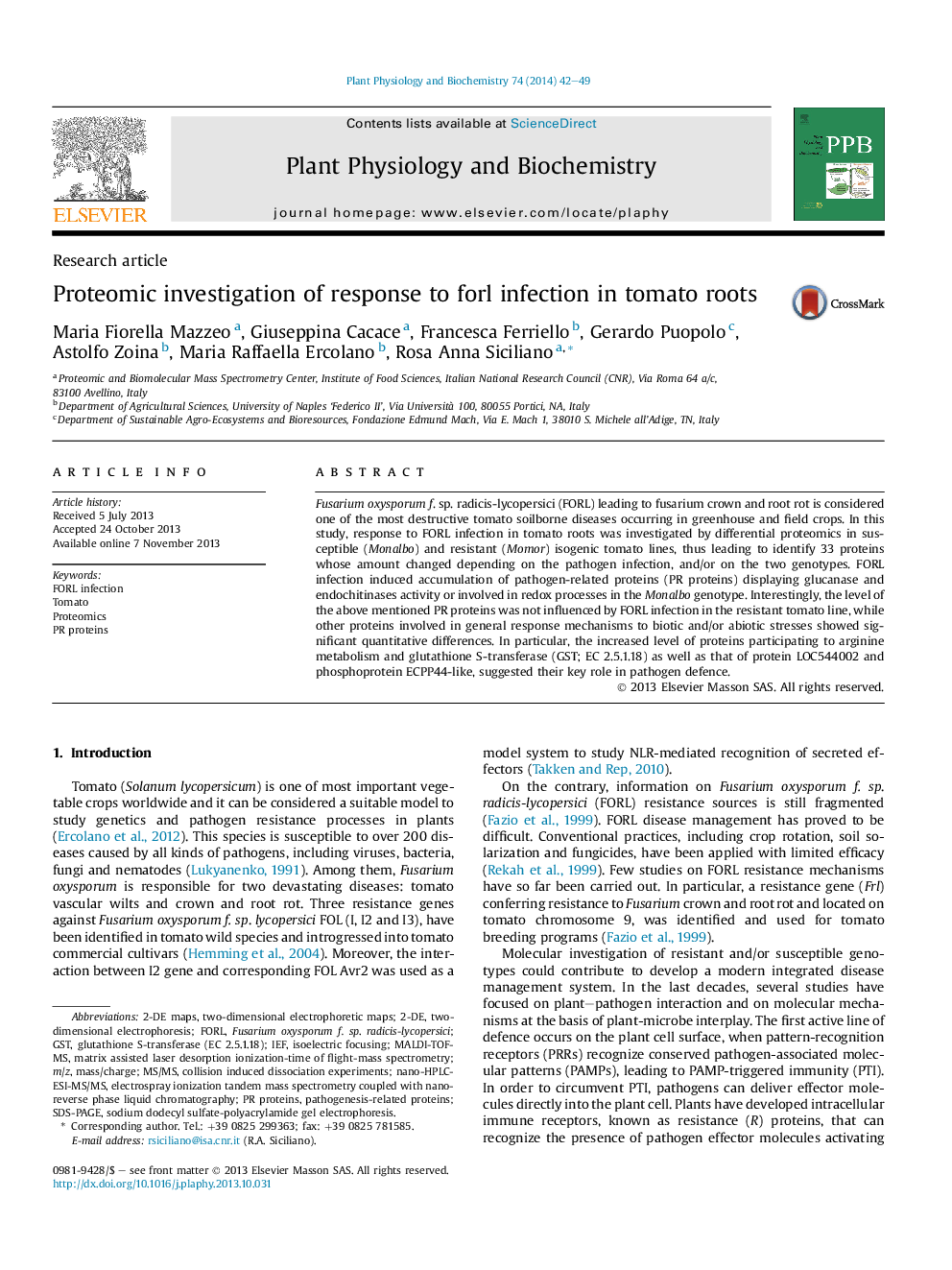| Article ID | Journal | Published Year | Pages | File Type |
|---|---|---|---|---|
| 2015937 | Plant Physiology and Biochemistry | 2014 | 8 Pages |
•Response process to FORL infection in tomato roots was studied through proteomics.•Susceptible (Monalbo) and resistant (Momor) genotypes displayed different mechanisms.•PR-proteins (chitinase, glucanase) were found in higher amounts in infected Monalbo.•Proteins involved in biotic/abiotic stress response accumulated in infected Momor.
Fusarium oxysporum f. sp. radicis-lycopersici (FORL) leading to fusarium crown and root rot is considered one of the most destructive tomato soilborne diseases occurring in greenhouse and field crops. In this study, response to FORL infection in tomato roots was investigated by differential proteomics in susceptible (Monalbo) and resistant (Momor) isogenic tomato lines, thus leading to identify 33 proteins whose amount changed depending on the pathogen infection, and/or on the two genotypes. FORL infection induced accumulation of pathogen-related proteins (PR proteins) displaying glucanase and endochitinases activity or involved in redox processes in the Monalbo genotype. Interestingly, the level of the above mentioned PR proteins was not influenced by FORL infection in the resistant tomato line, while other proteins involved in general response mechanisms to biotic and/or abiotic stresses showed significant quantitative differences. In particular, the increased level of proteins participating to arginine metabolism and glutathione S-transferase (GST; EC 2.5.1.18) as well as that of protein LOC544002 and phosphoprotein ECPP44-like, suggested their key role in pathogen defence.
